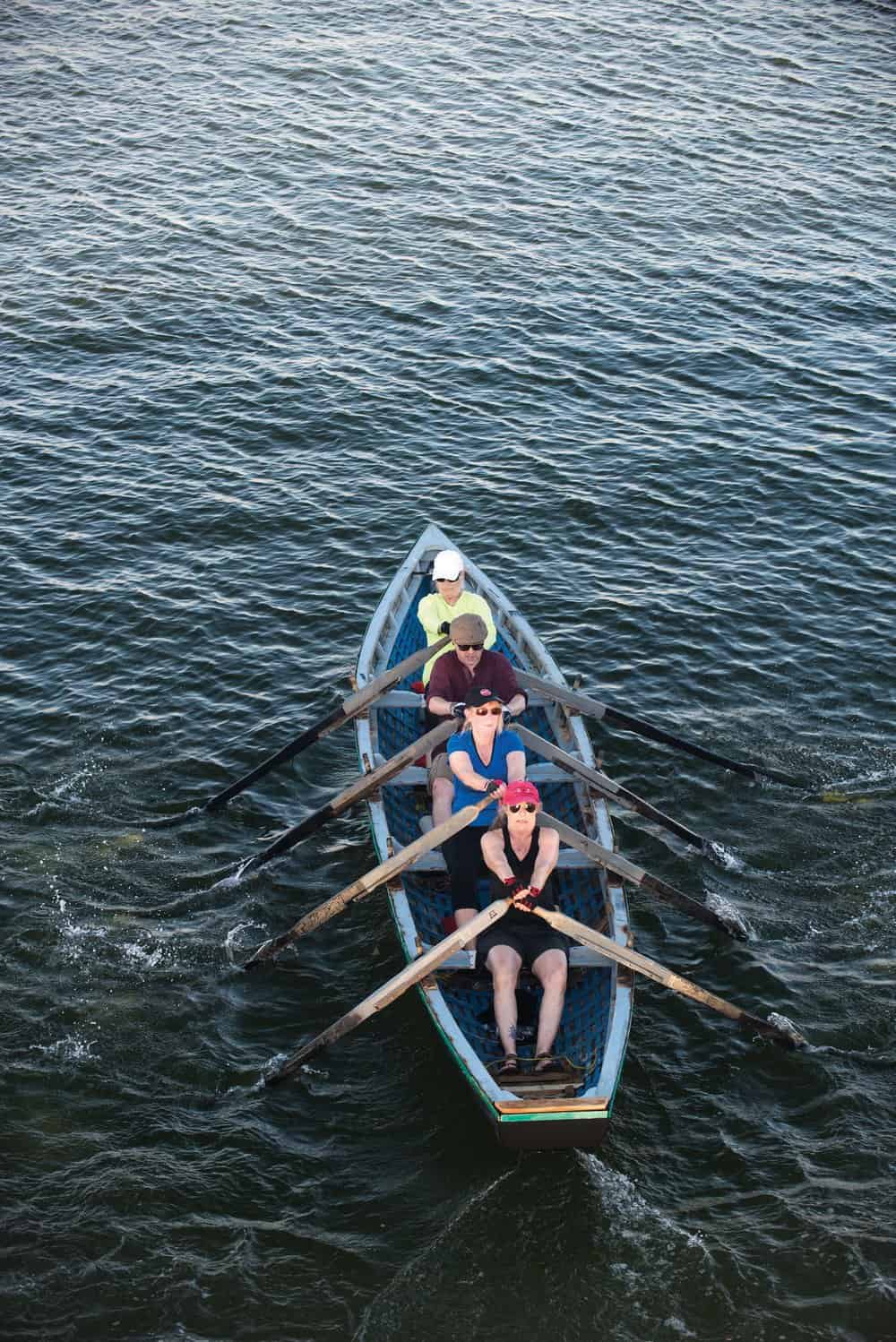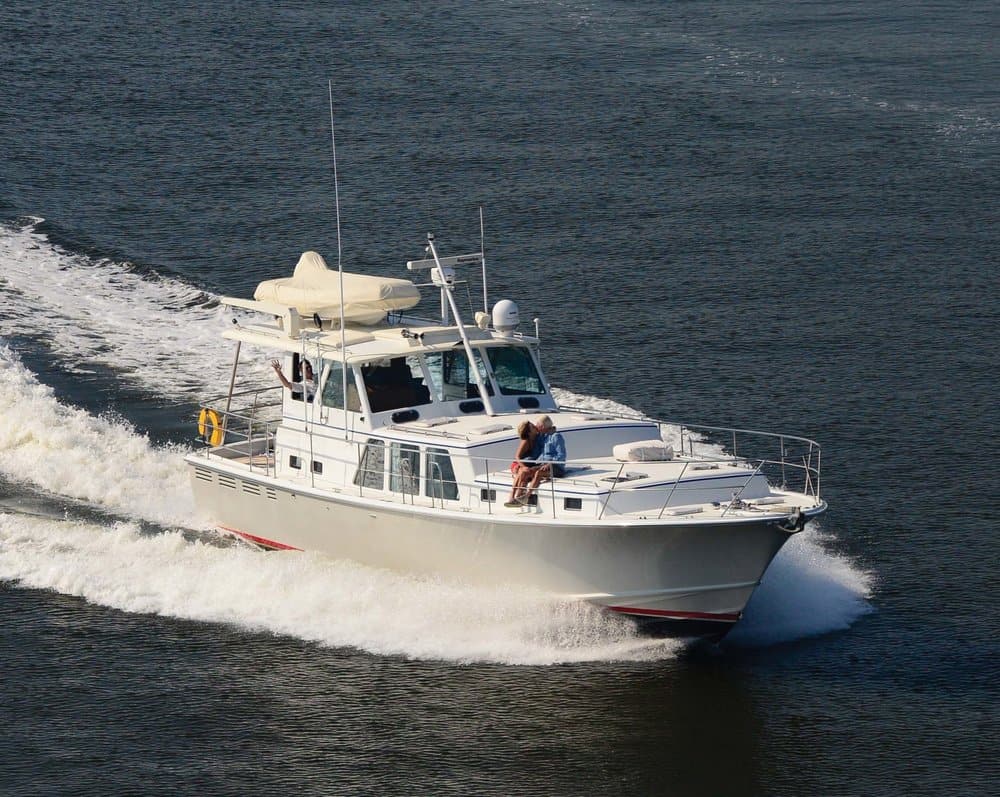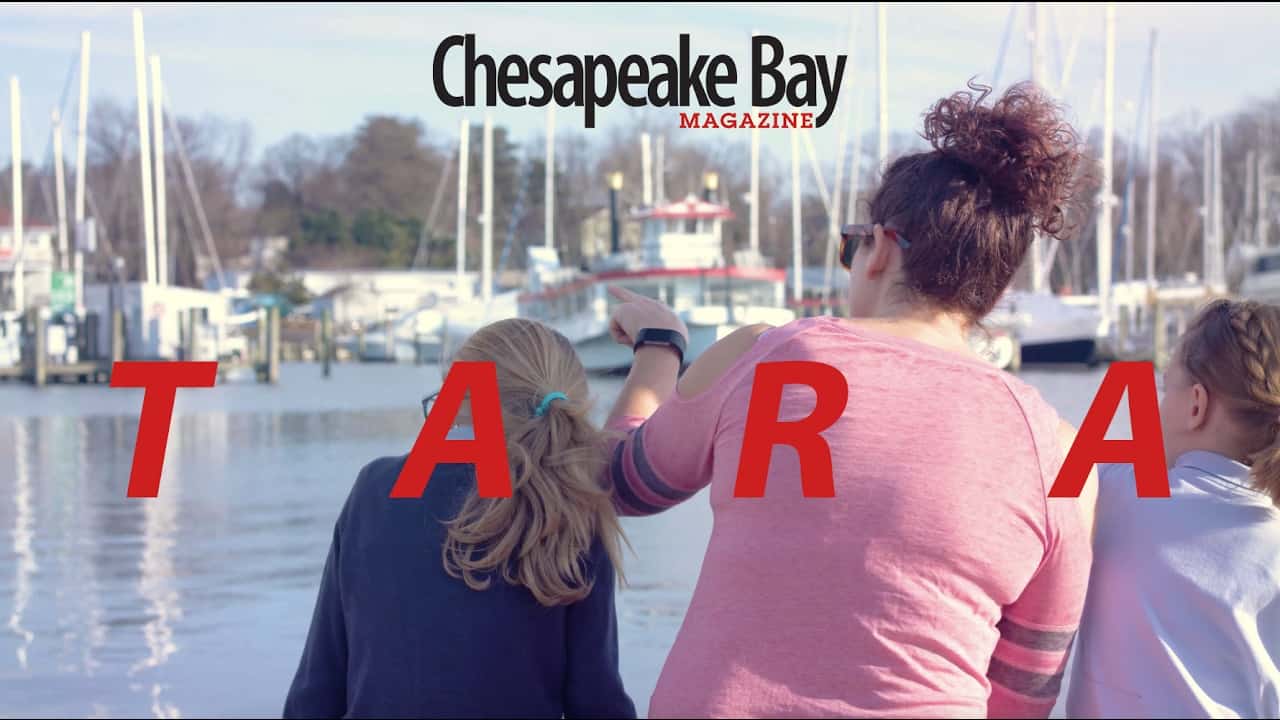There are no strangers here; only friends you haven’t yet met
—William Butler Yeats
Yeats’s words capture the essence of many an Irish gathering or bar, and if we’re talking rowers, they’re equally emblematic of the Annapolis Irish Rowing Club (AIRC).
Founded by Marylander Egan Nerich, the diverse membership propels lightweight wood and canvas boats (currach or curragh in Irish) on the Severn River and at regatta venues throughout North America and beyond. It turns out that while currach racing requires a hearty mindset and constitution, the sport has its door open wide to all who enjoy a challenge and the celebration of kinship on and off the water.
AIRC was conceived in the early 1980s after Nerich, who was born in New York City and has three grandparents hailing from Ireland, joined the Ancient Order of Hibernians as his brother and father had before him. Nerich collaborated with some Naval Academy admirals to put on a parade to honor St. Brendan and threw in a sailing race and some currachs for good Irish measure. He invited members of the Boston Irish Currach Club to town, and recruited a few local guys to test their mettle against some of Beantown’s best. The Annapolitans got beat, but Nerich got hooked on currach racing.
The currach originated on the west coasts of Ireland and Scotland and has roots reaching back to the Middle Ages. While regional variations have existed throughout the boat’s history, its simple construction remains—wooden strips on light frames covered originally in animal skin and now canvas sealed with tar or black oil-based paint. Nerich says that the currach’s maneuverability makes it ideal for Chesapeake Bay crabbing trips, and it’s also proven itself adequate for more cumbersome cargo. He recalls a photo of an Irishman in a currach full of sheep with a stern line towing a cow.
The Annapolis boats are the work of Monty O’Leary, who keeps shop on the Emerald Isle just across from Dingle on Ireland’s west coast. The Annapolis club makes their home along Spa Creek on a bit of St. Mary’s school waterfront property, which Nerich and his crew tend to in exchange for berthing privileges and access.
In the early days, the club found competition in New York and Boston. Now, The North American Currach Association (NACA) includes clubs from Pittsburg to New London and even Arizona. Currach racing is a global gig, and Annapolis members have been to Ireland numerous times, and a trip to Barcelona is in the works. NACA, of which Nerich is the vice president and treasurer, meets yearly to review rules, regulations and safety protocols, and set the racing schedule, which includes at least six regattas open to some combination of both men and women (the hosting team makes this call). The technical details mainly serve to maintain the traditional makeup of the boats and oars. The oars are narrow and flat-bladed to follow the tradition of rowing in rough waters. The narrow blades are less likely to catch a wave. Nerich allows that there aren’t many racing rules. “Basically, the only rule regarding collisions and conflict on the course provides that anything goes, except in the first few boat lengths after the start,” says Nerich. “If there’s
a tangle early on, we simply start over to give everyone a shot at making it to the first mark.”
Nerich doesn’t do visiting crews any favors when Annapolis hosts a regatta. He sets a triangular course in the Severn that’s intentionally difficult because, well, why not? During a match-race in a single-rower currach he says he remains focused on having a heart-to-heart with the boat. However, when it’s a fleet race, “Everyone needs to check their egos at the beach and get the job done as a unit,” he says. “Rowing is the only sport where you have to lose your identity. You all have to be clicking at exactly the same time to become part of the machine. You appreciate what everybody’s doing, because you know how hard it is.”
Physically, one needn’t be an all-star athlete to be proficient in the currach, just fit, determined and thick-skinned. “By August, your hands are looking like feet,” Nerich says. “The rowing motion requires a straight-arm pull with a snap at the end to propel the boat,” he explains, which can be tricky for newcomers.

AIRC member Katie McCord, who’s begining her fourth season with the club, says that being a rookie can be a bit daunting but is worth any preliminary rough waters. “It was challenging in the beginning, because it’s not an intuitive movement. It was humbling. It’s rewarding to be part of this tradition that harkens back to my Irish ancestry,” she explains. “I had no idea how important it is to have the experience of losing yourself as an individual for the greater good of the team.”
Of practicing and racing on the Severn, Nerich and McCord say the Chesapeake is tops. “The sights, the energetic water, darting between the small sailing school sailboats, the bustling activity in the harbor area, the fun of stopping for an Ego Alley pass and an oyster shooter at McGarvey’s, and it’s the very best way to enjoy a sunset,” says McCord. AIRC member Diana Freed echoes the sentiment, “Rowing on the Severn River can be a breathtaking experience, literally sometimes! We get to see our beautiful downtown, the Naval Academy and other sites. We see ospreys and their nests with babies, we see other boaters who love to pass us by, wave, and yell out they’re glad it’s us rowing and not them.”
In the end, the Annapolis crew is glad to have done the job themselves because, as McCord says, “I think our team is committed to honoring the tradition of currach rowing, working hard when we’re in the boats, and having a good time together on the road and the shore.”
It’s all in a day for the crew of the AIRC, so don’t be a stranger. They’d love to have a good row and a whiskey with you. Learn more about it at www.annapolisirishrowers.org.
—Laura Boycourt



